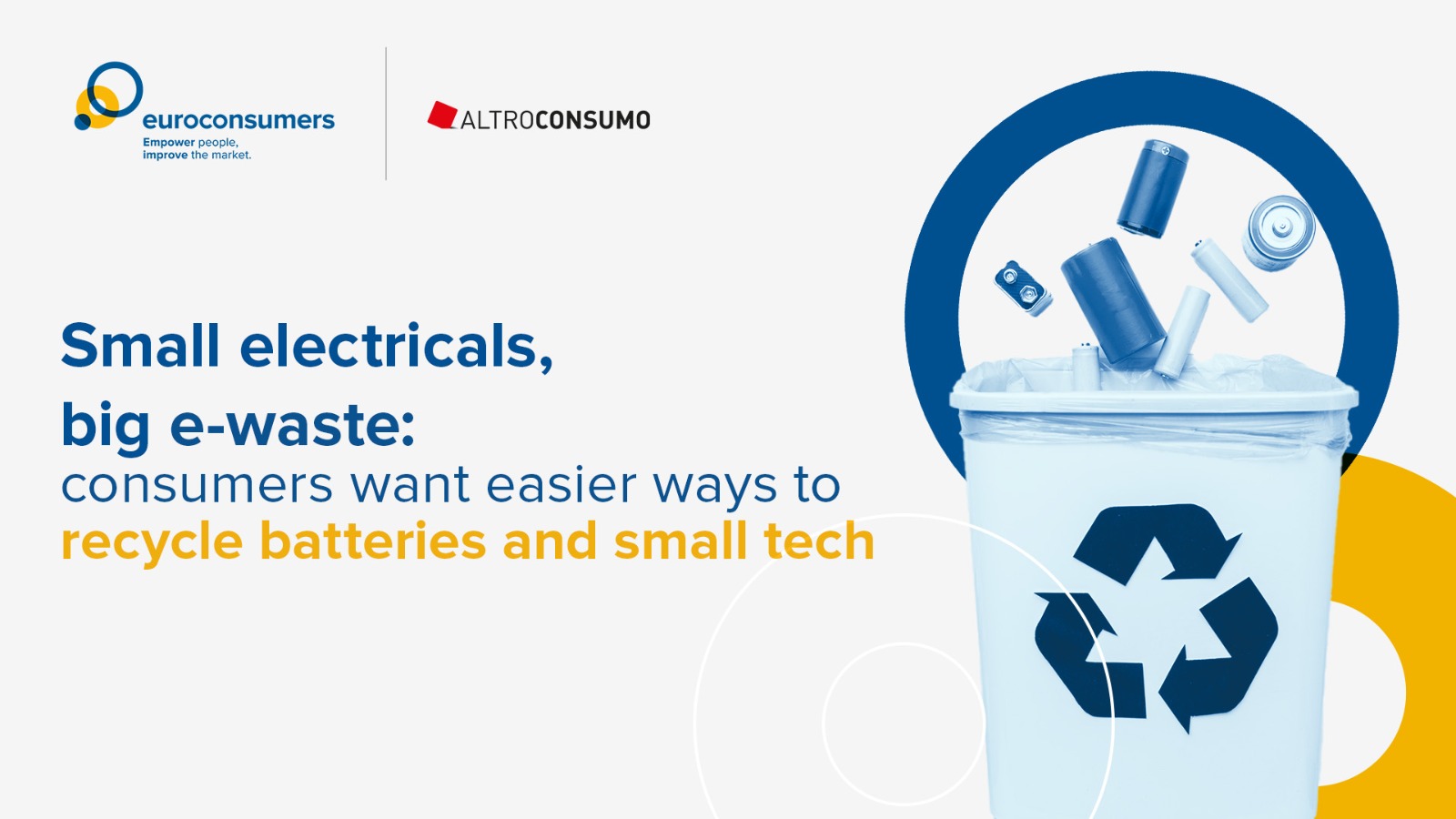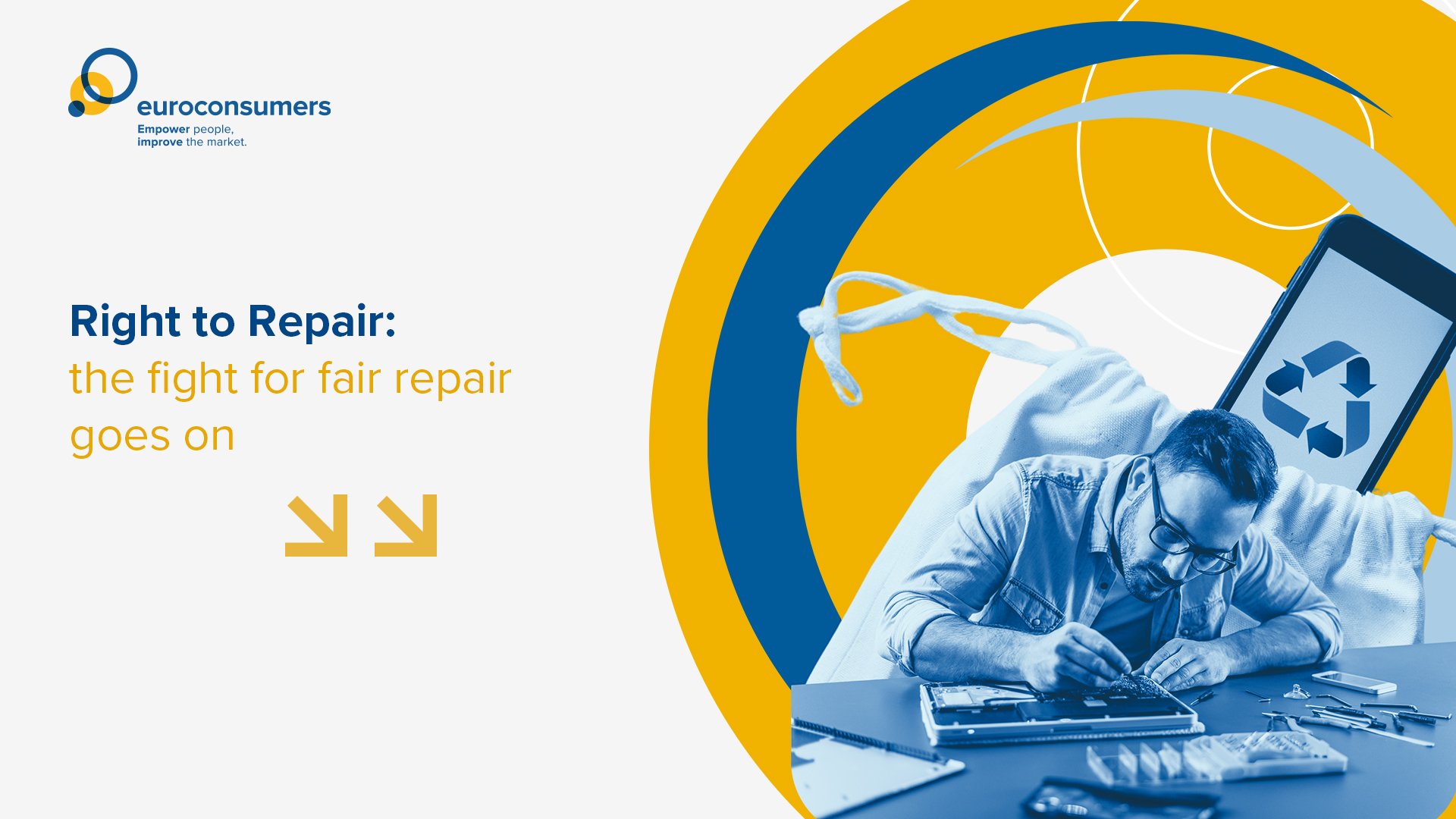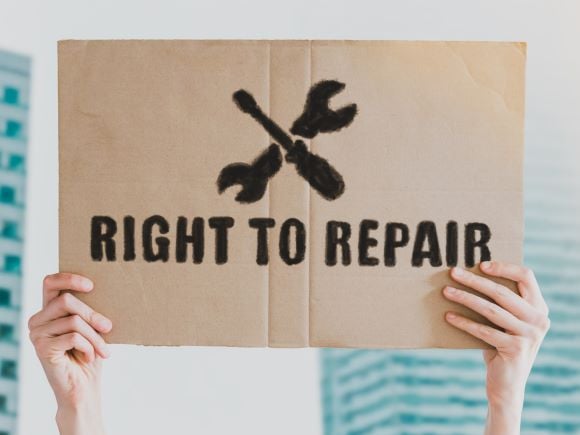Rights to repair are key to sustainable products that can be used and re-used for as long as possible. Euroconsumers’ journey to empower consumers and improve the repair market started nearly a decade ago with direct reports from frustrated consumers about products that they felt were breaking down too soon.
Products get trashed too soon
Belgian member Testachats / Test Aankoop launched a web reporting tool ‘Trashed too soon’ or ‘Trop Vite Use’ in 2016 to capture more details about failed consumer products. In the first month, around 10,000 Belgians had reported issues.
The data made clear that consumers found even the simplest breaks or product faults could become costly to get put right, and the best option is often to replace the product entirely.
Finally we had direct, crowdsourced data on the kind of products and brands that broke down most often and when. And crucially, what happened when they tried to get them repaired:
Top breaking products in order were smartphones, washing machines, televisions, printers and dishwashers
Product breakdowns peaked 2-3 years after purchase – which just so happens to be right after the legal guarantee period ends.
In 1 out of 3 cases consumers didn’t even try to get it repaired – either it was too expensive, or they didn’t know how to, or there were no spare parts available.
Only 20% of those that tried the repair option were successful.
Joining forces for durability and repair action
These initial dives into consumer data on durability and repairability led to larger multi-stakeholder and cross-border research including Euroconsumers Spanish member OCU through the PROMPT project.
The additional data on failed products confirmed that early obsolescence is everywhere and deliberate anti-repair practices are commonplace. The better news was that consumers told us they were willing to repair if it was easier and cheaper.
Through more multi-stakeholder consortium projects like Sharepair and CircThread we discovered how to get to accessible, affordable repairs. We tested out new data infrastructure, open information guides and how to stimulate the independent repair market through a network of ‘Repair cities’.
“Durability needs to be paired with repairability. Repair needs to get easier from optimizing design to making spare parts available and strengthening the repair service market. And most importantly – cutting the cost.”
Consumer class action against avoidable obsolescence
Alongside research and experimentation, Euroconsumers members have also launched class actions to show how serious we are about ending the endemic practice of premature obsolescence.
In December 2020 Euroconsumers launched the first ever class action in Europe to address the case of early obsolescence. The coordinated action in Belgium, Spain, Italy and Portugal was against Apple. It demanded compensation to millions of owners of the iPhone6 who had been pushed towards buying a new updated iPhone due to software updates that slowed down their existing one.
With no clear legal definition of ‘early obsolescence’ we relied on consumer legislation against misleading practices, arguing that consumers were not informed that running the software to update their phone would become obsolete.
Legislation: right to repair and more
Euroconsumers together with BEUC has actively influenced the set of legislative policy designed to stimulate a low-waste, high-efficiency circular product system. Some like the Ecodesign for Sustainable Products rules do as much as they can to minimise the need for repair and Empowering Consumers for the Green Transition includes new requirements for pre-contractual information on repairability. There is also the Cyber Resilience Act that requires support for connected devices for their expected lifetime; and promised revisions to industrial design rules on IP to liberalise the spare parts market.
But the most famous piece of the legislative jigsaw is the Right to Repair Directive, which gives repair rights to consumers and obligations on manufacturers. In short:
- During the legal guarantee period repair should always be an option that is offered to consumers and even promoted
- After the legal guarantee period manufacturers still need to offer to repair a limited set of common products (washing machines, vacuum cleaners, even smartphones
- For the same list of products, manufacturers will also have to provide spare parts, repair info and diagnostic tools at a reasonable price
- Anti-repair techniques are banned including contractual clauses, hardware or software techniques that obstruct repairs. It’s also no longer legal to prevent second hand or 3D printed spare parts being used by independent repairers, or to refuse to repair something because it was previously repaired by someone else.
Let’s flex the repair muscle together
Overall, the future for product repair and durability looks a lot rosier than 10 years ago. It matches people’s expectations of manufacturers to build better products, and we know they back the legislation – Euroconsumers 2024 survey found that 57% of consumers thought that having the right to repair was very or extremely important.
Of course, there’s room for improvement. We had hoped to see longer guarantee periods to incentivize longer life products, and more action on cutting consumer costs. But overall, the legislation is an impressive step on the road to a repairability mindset and system.






